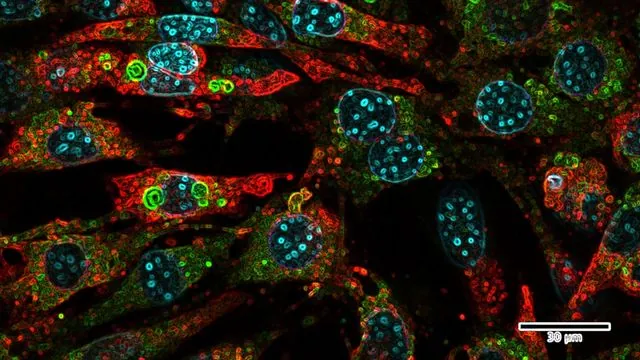
Unlocking the Mystery of Heart Failure: How Internal Fat Could Be the Key
2025-09-01
Author: Ming
New Insights into Heart Failure with Preserved Ejection Fraction
A groundbreaking study published in JACC reveals that heart failure with preserved ejection fraction (HFpEF) may be driven more by the biology of internal fat tissue than previously thought. This fresh perspective, proposed by Milton Packer, MD, offers new hope for diagnosing and treating this common yet misunderstood condition.
Understanding HFpEF: The Hidden Struggles of Millions
HFpEF affects approximately 4 million people in the U.S. and 32 million internationally. Characterized by a stiff heart muscle that struggles to adapt to incoming blood, patients often endure shortness of breath and fluid retention, making even simple activities a challenge.
Rethinking Risk Factors: Beyond High Blood Pressure
Traditionally, high blood pressure was regarded as the primary culprit behind HFpEF, but new findings suggest that excess fat around vital organs may play a more significant role. The newly introduced Adipokine Hypothesis provides a framework to understand how this internal fat tissue leads to heart failure.
The Role of Adipokines: Friends Gone Rogue
Adipokines, the signaling molecules released by fat tissue, usually protect vital organs. However, when internal fat becomes excessive, these molecules turn against the body. They start promoting inflammation and stress in the heart, contributing to HFpEF development.
Innovative Treatment Approaches: Drugs That Target Fat, Not Just the Heart
Excitingly, some existing drugs designed to shrink fat tissue can alter adipokine profiles and alleviate HFpEF symptoms, showcasing a paradigm shift in treatment strategies. Notably, GLP-1 receptor agonists like semaglutide have shown promise in redefining adipokine release.
A New Way to Diagnose: Beyond BMI
The study also suggests that the term 'obesity' can be misleading when it comes to identifying individuals at risk for HFpEF. Instead of relying solely on Body Mass Index (BMI), which doesn't fully account for body composition, the waist-to-height ratio is recommended. A ratio exceeding 0.5 could signal significant internal fat, even if BMI falls within normal limits.
Awareness is Key: Recognizing Symptoms of HFpEF
Packer emphasizes the need for clinicians to remain alert for HFpEF symptoms, especially in patients with a high waist-to-height ratio. Many who experience shortness of breath may dismiss it as mere obesity, missing the chance for effective treatment.
A Legacy of Innovation: Packer’s Impact on Heart Failure Research
Dr. Packer has a long history of revolutionizing our understanding of heart failure, having introduced the neurohormonal hypothesis over thirty years ago. His latest work on the Adipokine Hypothesis adds another layer to the ongoing quest to better understand and treat heart conditions.
With these new insights, the fight against heart failure is gaining a promising edge, potentially changing the lives of millions affected by this condition.


 Brasil (PT)
Brasil (PT)
 Canada (EN)
Canada (EN)
 Chile (ES)
Chile (ES)
 Česko (CS)
Česko (CS)
 대한민국 (KO)
대한민국 (KO)
 España (ES)
España (ES)
 France (FR)
France (FR)
 Hong Kong (EN)
Hong Kong (EN)
 Italia (IT)
Italia (IT)
 日本 (JA)
日本 (JA)
 Magyarország (HU)
Magyarország (HU)
 Norge (NO)
Norge (NO)
 Polska (PL)
Polska (PL)
 Schweiz (DE)
Schweiz (DE)
 Singapore (EN)
Singapore (EN)
 Sverige (SV)
Sverige (SV)
 Suomi (FI)
Suomi (FI)
 Türkiye (TR)
Türkiye (TR)
 الإمارات العربية المتحدة (AR)
الإمارات العربية المتحدة (AR)